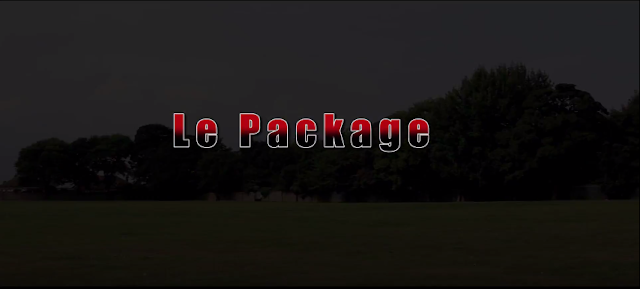Our induction task was to create a short film only using a specific number of different shots, while including a transaction of a package. We had to demonstrate our understanding of continuity editing, mise-en-scene, camera angles, camera placement, movements and distances. In my group (myself, Luke and Daniel) we decided to make our production about a drug deal, hinted at by the characters attire. Overall we are happy with the end result and finished before the deadline.
For our establishing shot we used a conventional long shot panning from right to left. It allowed us to set the scene and show off the title of our short film. We used natural lighting throughout the production but edited the shots slightly with colour corrector in the editing process. In this shot we adjusted the lighting so the sky appeared darker and the colours were less vibrant. To transition the next shot we used a fade to show how time had passed but in the same location.
To fit our brief we had to include the transfer of a package. When doing this we used medium shots and a close up. These two shots worked well as matches on action was successful here. The fact that there is little else in the scene also connotes the importance of the package.
This shot and a couple of the following shots were used to create a shot-reverse shot sequence. A shot-reverse shot sequence is when the camera cuts multiple times between two people, and should follow a 180 degree rule. We broke this rule however because we used a match on action, Luke tapping Daniel in a wide shot continuing to an over shoulder shot, and shot-reverse shot the audience wouldn't be disoriented. We used this to our advantage as we weren't allowed to use dialogue, yet these shots strung together made it look like the two actors were having a silent conversation.
This was the final shot used for the shot-reverse shot sequence. We followed this up with the shot below creating an eye-line match to a POV. An eye-line match is when a person looks out of shot and the camera cuts to what the person is looking at. In the shot of the girl we are able to see the distance between her and the male subject as well as that the mise-en-scene (what's in the shot) matches the establishing shot.
This is an extreme close up as it uncomfortably close to the persons face. We added this shot in to show that the subject recognised she has been spotted before cutting back to the wide shot so the audience can see the direction she is running in. Meaning the next shot in a different location makes sense.
We used this empty shot of just trees as a re-establishing shot. There were no people in view although we recorded mine and Luke's footsteps running past as asynchronous sound (sound we can hear but can't see where it's coming from). When shown to the class some feedback we received was that this scene lasted too long which we definitely agree to, it lasted eleven seconds long of nothing but trees.
We decided that a low camera placement using an extreme close up shot would work well to introduce the chase scene. Because of where the camera is placed it creates a sense of being among the action. It is also quite conventional for this kind of shot to be present in chase scenes in order to show the distance between the two runners. Their is the issue however that when filming this we forgot to take the camera out of auto focus: so even though we set it to focus on our feet before filming when we walked out of shot it then focused on the background behind us. This resulted in the used shot to have the wrong focal points.
Here a medium long shot was used as it showed the two characters run on/off screen but also made the area appear larger and the distance they were travelling greater. The low exposure was created on purpose to create a gritty feel, the silhouettes also made it appear as if we were running faster.
We used this close up to again to show that we can successfully match cuts on actions and it also creates tension as we previously saw the girl run into this area and now this actor is looking for her. There is little lighting on his face connoting negativity and the camera is also at a low angle connoting power.
For this shot we used a over the shoulder shot with a handheld pan. This created the feeling of what it would be like to be in the tree looking down on the subject. The high angle also showed how the power had shifted from one character to another, as the girl now takes up most of the screen and is above Luke. In this shot we kept the mise-en-scene very simple, trees and the two characters, as to not distract the audience from the important action that was occurring.
For our final shot we used a match on action, so we see the girl jump out of the tree in a low angle wide shot and land in a close up of just her feet. This shot worked particularly well as the cat mask was discarded close to the camera, creating an extreme close up and the girl became out of focus as she walked away and faded from view for the credits to scroll.















I really like your short sequence (though it's a pity the 'forest' establishing shot is such a long take) and you have done a pretty good job of explaining a range of the techniques you have used, although sometimes I think you need to be slightly clearer in your definitions. Watch spelling too - eg their/there. Good work though Faye - promising!
ReplyDelete